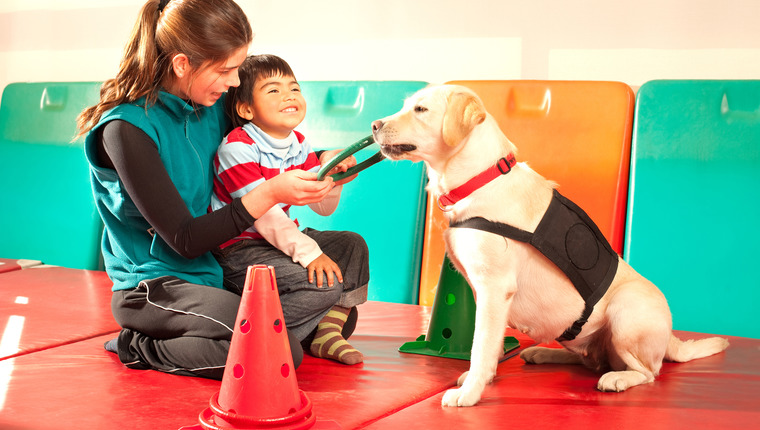
Generally, people with autism are recommended therapy dogs to help with anxiety, cognitive growth, and social situations. However, a recent study finds that not all autistic children benefit equally from therapy dogs.
Helping Kids With Autism and Therapy Dogs
Emma Keicher is a behavioral analyst at the University of Missouri, and one of the study’s authors. According to Keicher, we know how beneficial therapy dogs are, but there still isn’t a standard way to effectively measure the treatment.
In fact, Keicher knew sometimes therapy dogs negatively affected an autistic child’s stability.
”Some kids may hit or kick the dog or don’t have a connection to the dog, and it can become too overwhelming for a family to care for the dog, and they may have to rehome it,” Keicher told HealthDay News.
This being the case, Keicher formed an idea. A reliable way to measure dog-assisted therapy on an individual basis would help doctors and patients. Depending on the results, patients’ responses would help uncover whether dogs were an effective therapy. Otherwise, they could choose an alternative treatment method.
For the study, Keicher organized a group of six autistic boys, aged 4 to 9. After finishing their work, the boys could choose between spending time playing with Rhett, a Labrador Retriever and therapy dog, or different toys.
Keicher and the other researchers got curious results. Of the six boys in the sample, two chose to play with Rhett consistently over the toys. The other two were split down the middle: two chose Rhett half the time, and the other two preferred toys.
After the initial trial, follow-up studies confirmed the early results. Amazingly, only 30% of subjects showed a preference for dogs. Perhaps dog-assisted therapy is vulnerable to over-prescription. After all, it’s reasonable to assume our biased attitudes about dogs could inflate how effective we think they are.
Letting the Data Speak
More importantly, though, Keicher found that the study’s results accurately and reliably predicted dog therapy treatment effectiveness. “The key is to find out what motivates a child with autism, whether it’s playing with a therapy dog or a favorite toy,” says Keicher.
And the study—published in Behavior Analysis in Practice—helps doctors and therapists do just that.





